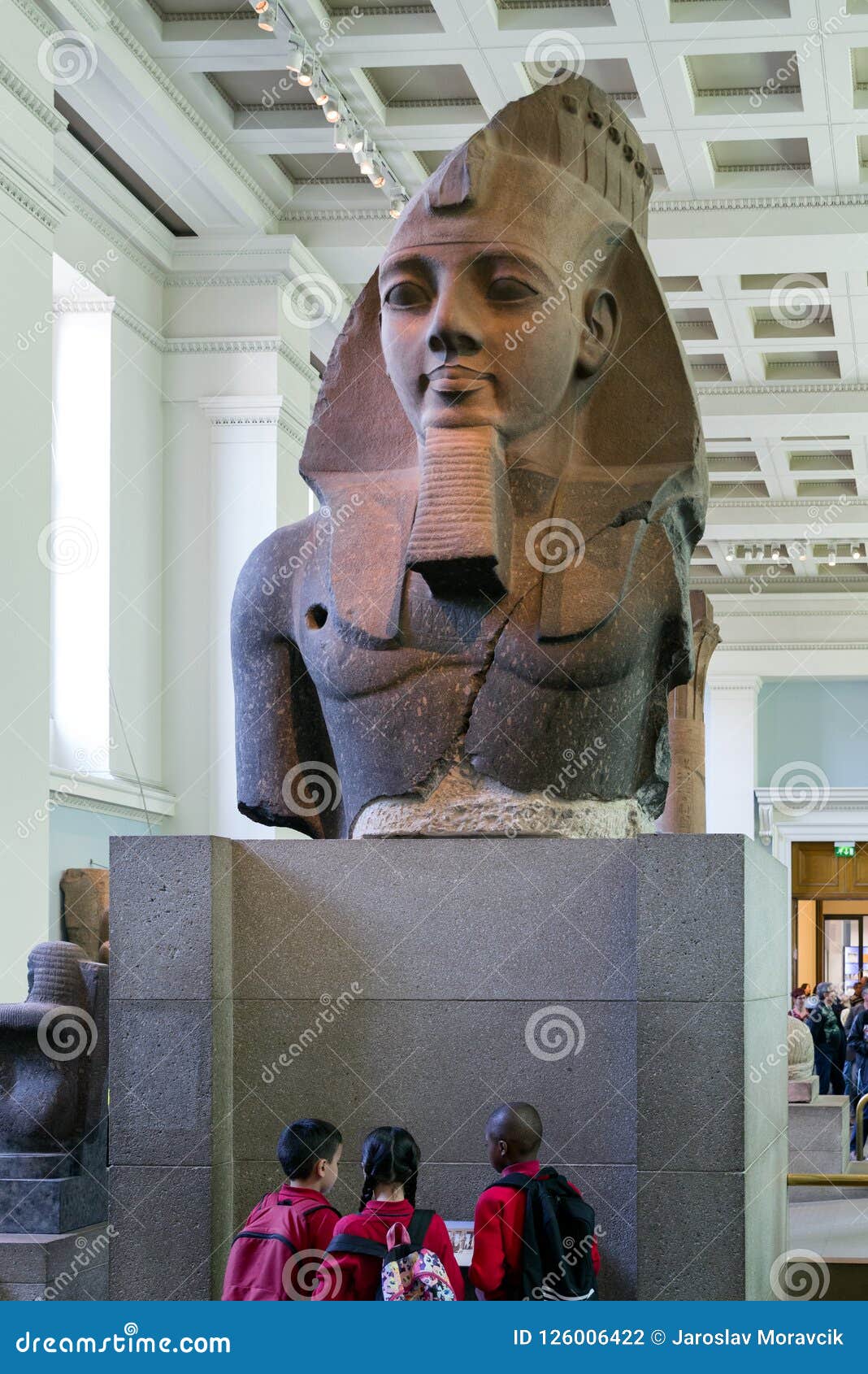
Statue of Egyptian King Ramesses II in British Museum, London Editorial Photography Image of
This colossal bust of Ramesses II is one of the largest sculptures in the British Museum, but it is only the top part of a much bigger seated statue of the king. The bottom part is still in the Ramesseum, Ramesses' memorial temple on the west bank of the Nile at Thebes (modern Luxor). It offers the opportunity to study several different aspects of kingship in ancient Egypt, including the.

Ramses II British Museum
By Marcel Maree, Curator, British Museum. This magnificent sculpture is the upper third of a colossal seated statue that represents Ramesses II, one of the most illustrious kings of ancient Egypt.

LIMESTONE STATUE OF RAMSES II, BRITISH MUSEUM Ancient egyptian artifacts, Ancient egypt, Egypt
The largest Egyptian sculpture in the British Museum represents one of Egypt's greatest kings: Ramesses II, 'ruler of rulers', who reigned through most of the 13th century BC. The Egyptian sculpture gallery is also home to the sarcophagus of Nectanebo II, Egypt's last true pharaoh. His reign was cut short by a Persian invasion, and his ultimate.

Ramses II La Grande Statue De British Museum Photo éditorial Image du hommes, statue 115448376
Ramesses II (/ ˈ r æ m ə s iː z, ˈ r æ m s iː z, ˈ r æ m z iː z /; Ancient Egyptian: rꜥ-ms-sw, Rīꜥa-masē-sə, Ancient Egyptian pronunciation: [ɾiːʕamaˈseːsə]; c. 1303 BC - 1213 BC), commonly known as Ramesses the Great, was an Egyptian pharaoh.He was the third ruler of the Nineteenth Dynasty.Along with Thutmose III of the Eighteenth Dynasty, he is often regarded as the.

The Ancient Egyptian Granite statue of Pharaoh Ramses II. Currently located at the British
Strudwick N 2006. The two main temples that survive at Abydos, the cult centre of Osiris, are memorial temples to two of the most prominent kings of the Nineteenth Dynasty, Sety I and his son Ramesses II. The decoration of both temples included a list of kings of Egypt. That of Sety I is complete and is still in the temple, while the five.
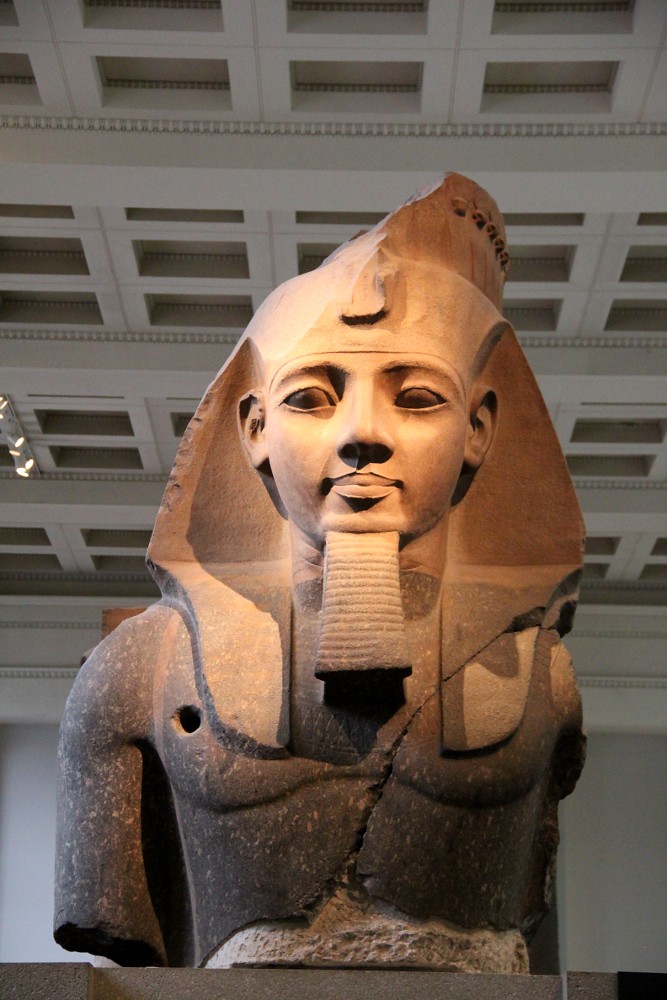
Londres Ramses II Londres 11/06/2012 British Museum Aurélie Flickr
Experience The Best of London. Discover England. Order Now! Order Your London Tours With Expert Guides Guaranteed. Book Tickets for the Best Prices.

view of the Statue of Ramses II at the British museum in London, England UK, Stock Photo
Find the best tours, tickets, trips & more. Compare prices and book online on Tripadvisor. Full refund available up to 24 hours before your tour date. Quick & easy purchase process.

Ramsès II, le Jeune Memnon (British Museum) Ancient egyptian art, Ancient egyptian artifacts
One of the largest pieces of Egyptian sculpture in the British Museum, this statue shows Ramesses II, who succeeded his father Sethos I in around 1279 BC and ruled Egypt for 67 years. Weighing 7.25 tons, this fragment of his statue was cut from a single block of two-coloured granite. He is shown wearing the nemes headdress surmounted by a cobra diadem.

Ramesses II British museum, Egyptian artifacts, Ancient egyptian
— American Friends of the British Museum Secondary navigation. Shop; Search; Donate; Hide menu Ramses II Header Ramses II. Also known as Ramses II primary name: Ramses II other name: Ramesses II other name: Ramesses The Great.

Bust of Ramses II Pharaoh of Egypt in British Museum, London, UK Editorial Stock Image Image
Room 4, British Museum, London. Identification. EA 19. The Younger Memnon is an Ancient Egyptian statue, one of two colossal granite statues from the Ramesseum mortuary temple in Thebes, Upper Egypt. It depicts the Nineteenth Dynasty Pharaoh Ramesses II wearing the Nemes head-dress with a cobra diadem on top.

Ramesses II Seated Statue, Thebes (Illustration) Ancient History Encyclopedia
Sandstone rectangular statue base of the king Ramesses II, only the feet of the alabaster statue of the king remaining. The feet show that the king was originally depicted in a striding position with the left leg advanced ahead of the right. Part of the stone behind the left foot is also still intact. Along the top of the statue base and underneath the feet are incised depictions of the Nine.

London, UK Head of the Statue of Ramses II at the British Museum Editorial Stock Image Image
Sattin 1988 / Lifting the veil: British society in Egypt, 1768-1956 (pp. 35- 38; pp. 41- 43) Serino 1988 / L'Egitto e la sua riscoperta nell'Ottocento (p. 11) Sourouzian 1988 / Standing Royal Colossi of the Middle Kingdom Reused by Ramesses II (p. 235, n. 26) Wilson 1989 / The Collections of the British Museum (pp. 61- 62)
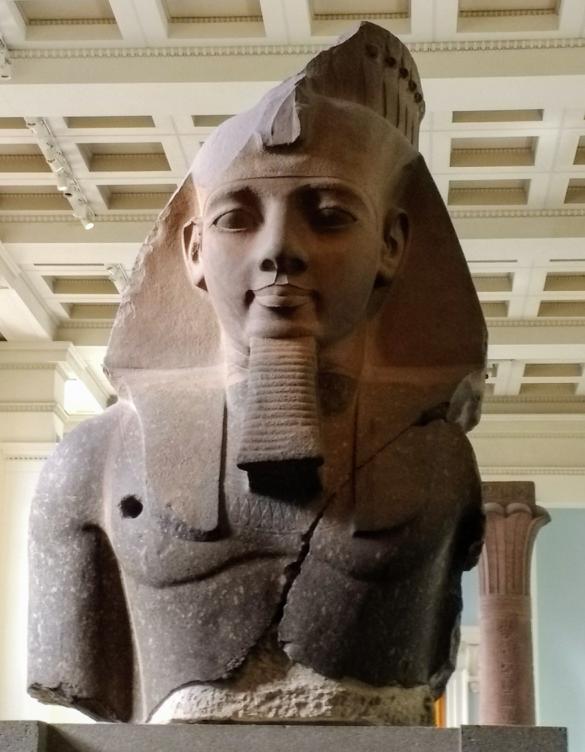
7 Things to see at the British Museum You in London
One of the largest pieces of Egyptian sculpture in the British Museum, this statue shows Ramesses II (EA19), who succeeded his father Seti I in around 1279 BCE and ruled Egypt for 67 years. Weighing 7.25 tons, this fragment of his statue was cut from a single block of two-coloured granite. The statue was retrieved from the mortuary temple of Ramesses II at Thebes (the 'Ramesseum') by the.
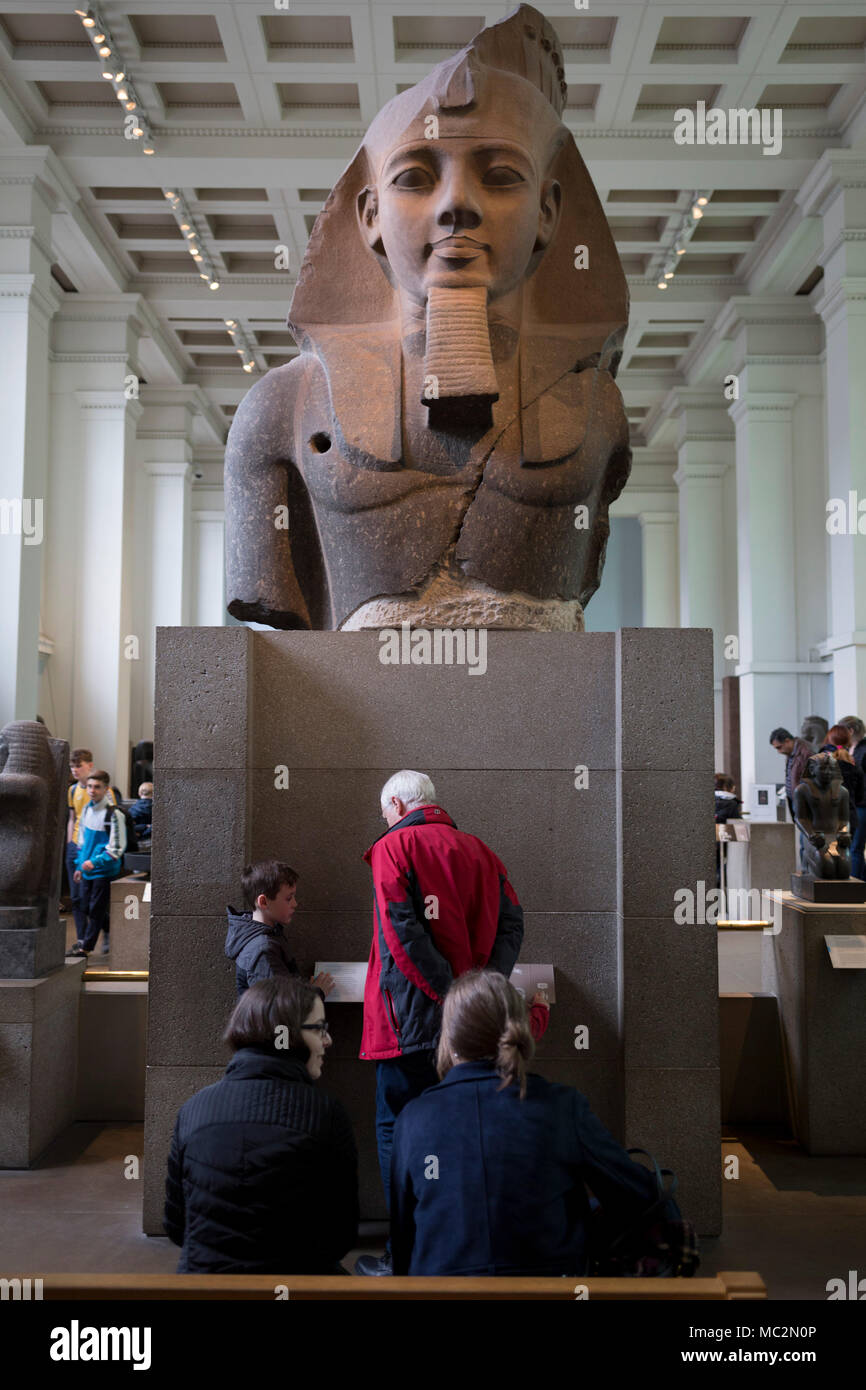
The ancient Egyptian Pharaoh Ramses II, in Room 4 of the British Museum, on 11th April 2018, in
Upper part of a red granite colossal statue of Ramses II: the middle part of the statue has not been found, and the left elbow is broken. Aside from the damage to the nose, the sculpture is in good condition and displays very good workmanship. The surfaces are smoothly polished, with the exception of the band on the forehead, the eyebrows, and the cosmetic bands around the eyes, which were.
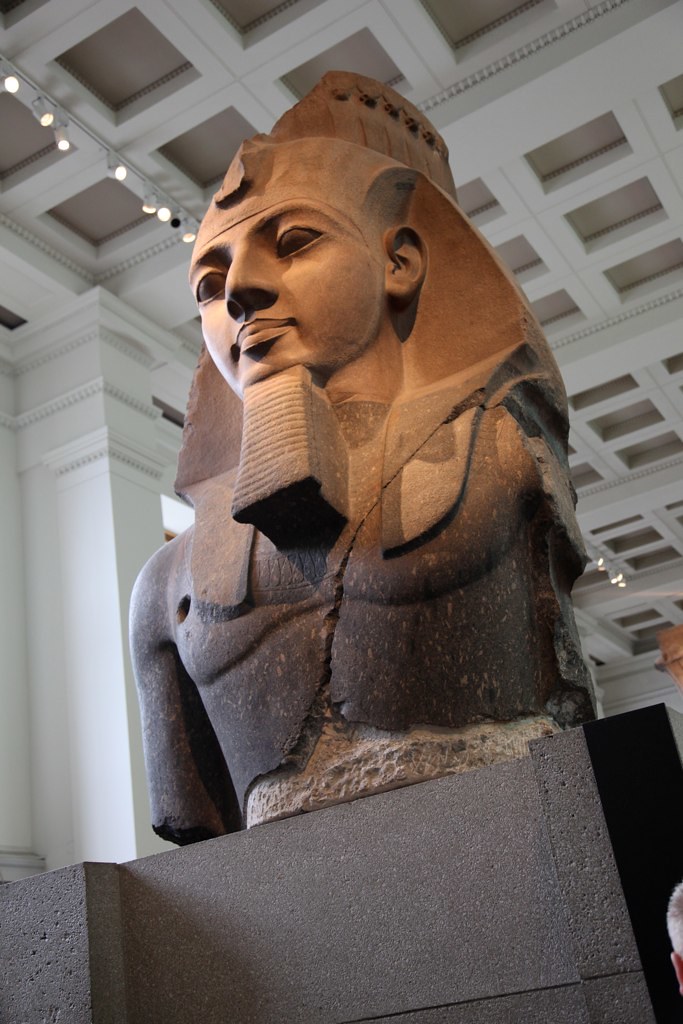
IMG_9819 British Museum Ramses II BepJack Flickr
Ramesses was born in 1303 BC and reached the aged of 90 before dyingin 1213BC. He is a famous building numerous cities temples and monuments in his reign. Included in his long list are the temples that heand his wife, Nefertari, carved out of the mountainous rock at AbuSimbel. Making sure that there is no mistaking who built the temples, they.
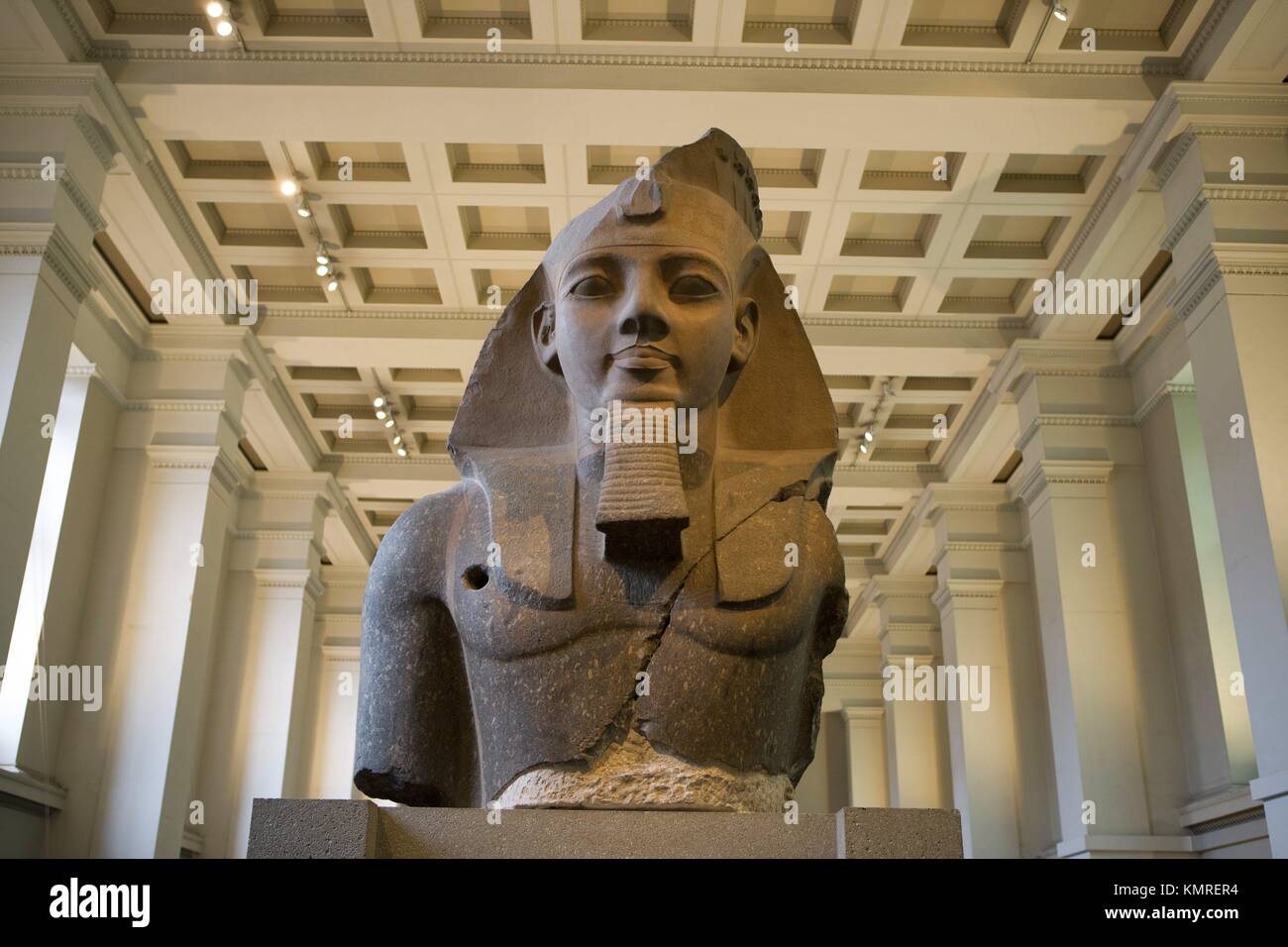
Stein Büste der ägyptischen Pharao Ramses II., ägyptischen Skulptur, das British Museum, London
This colossal bust of Ramesses II is one of the largest sculptures in the British Museum, but it is only the top part of a much bigger seated statue of the king. The bottom part is still in the Ramesseum, Ramesses' memorial temple on the west bank of the Nile at Thebes (modern Luxor). It offers the opportunity to study several different aspects of kingship in ancient Egypt, including the.